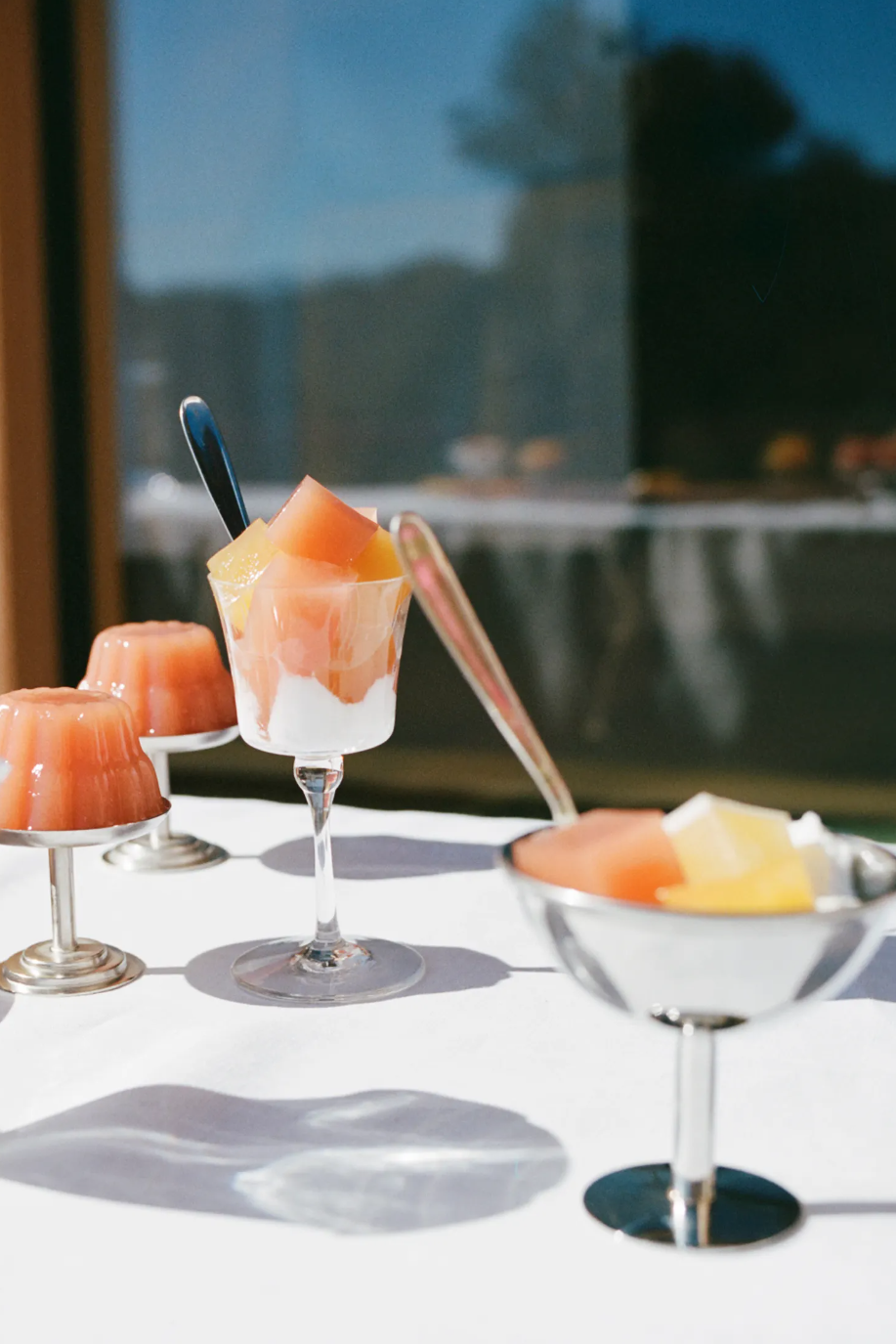Orange pearls of ikura glimmering inside pink cubes of lychee martini jelly. Crimson shards of beetroot gel scattered with bitter radicchio. Burrata and tomatoes suspended in a salty honey orb, a snow globe you could eat. Ruby-hued melon jelly nestled in its rind, draped with prosciutto like a Renaissance painting. These surreal hors d’oeuvres, unveiled at an experimental aperitivo hour during this year’s Venice Biennale, belong to Zoe Messinger – the chef and artist now pushing gelatin into bold new territory with her line of powdered mixes, Gelée.
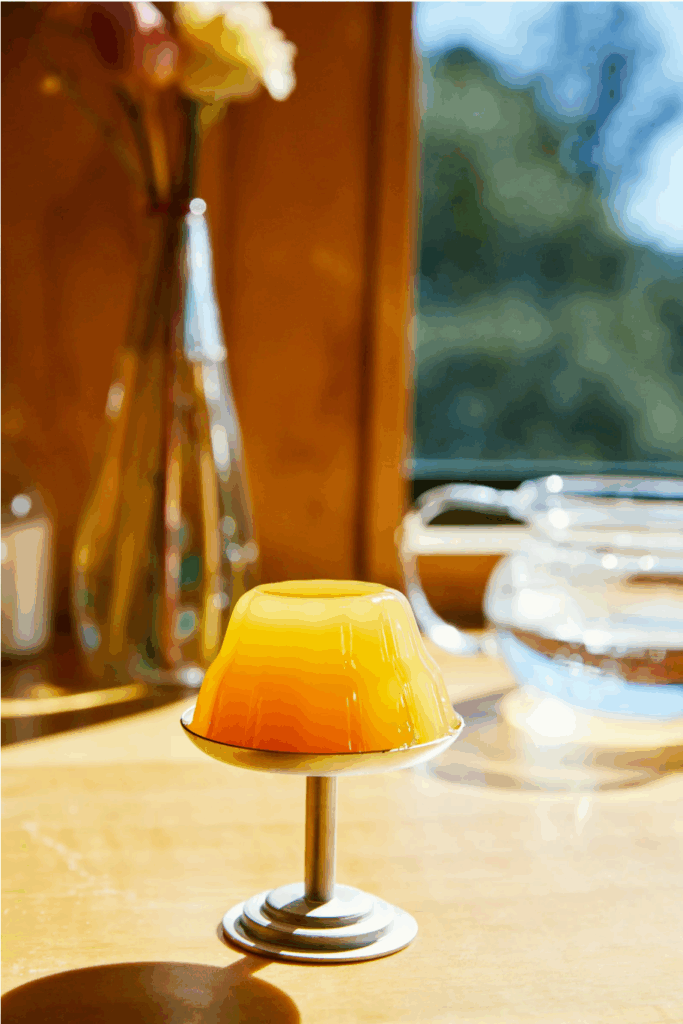
Available in guava, passion fruit, and pineapple coconut, Gelée isn’t about dieting or discipline. It’s about play. Messinger sees her jellies as a medium of self-expression, encouraging people to approach the kitchen with curiosity instead of intimidation. “Joy and play are nutrients in their own right,” she says. Future flavours will veer salty, acidic, and beyond – a palette for edible creativity.
The powders are made from non-GMO whole fruit and collagen-rich gelatin, with naturally occurring pre- and probiotics. No sugar, no fuss: just hot water, a mould, and a bit of imagination. A recent recipe layered cubes of passion fruit jelly with coconut yogurt, whipped cream, and honey – an elegant parfait with a satisfying snap that felt far removed from the childhood snack packs or hospital trays most of us associate with Jell-O.
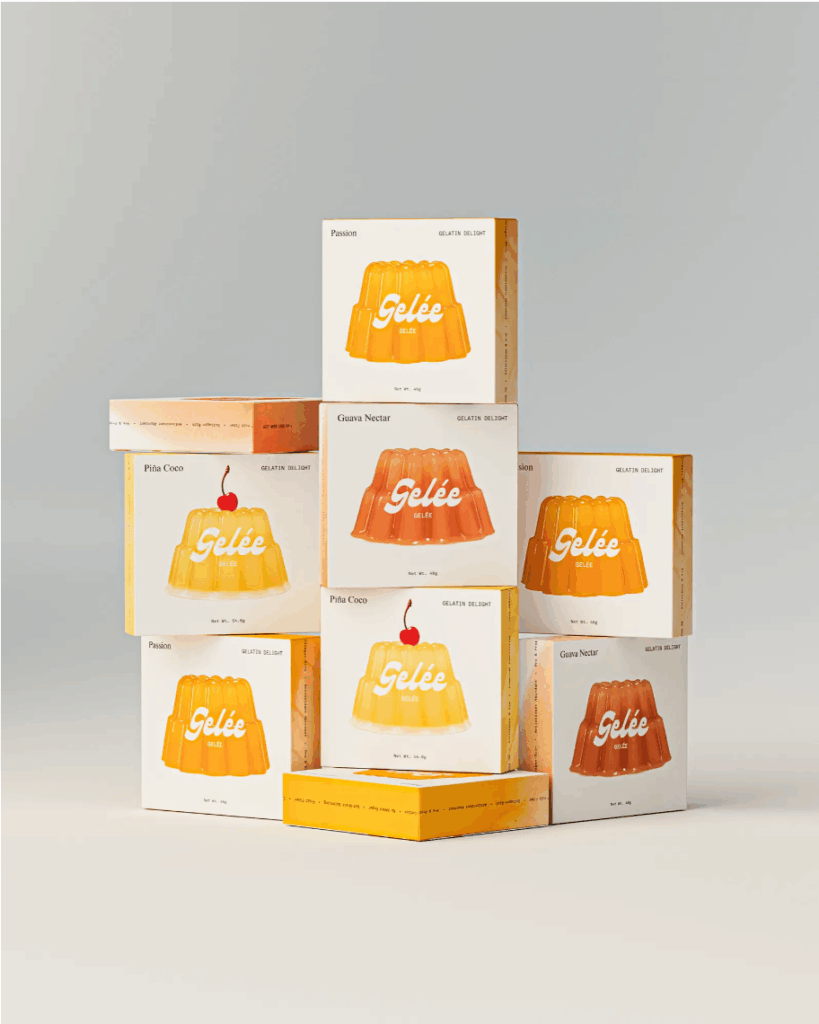
For Messinger, Gelée is the canvas she’d been searching for since her early days on the line at LA hotspots Kismet and Freedman’s. “I always begged to stay on expo,” she recalls, “because I loved dressing plates, painting that last brushstroke of sauce.” With Gelée, she’s created a medium that can do the same for anyone. “It’s basically Crayola,” she jokes. “Only instead of crayons, you get food.” The brand already sells silicone moulds, with plans to expand into every conceivable shape – plus vintage copper moulds for the romantics.
The idea took root during the pandemic, when Messinger was back in rural Pennsylvania, making bone broth and recalibrating her relationship with food. Inspired by holistic brands like Moon Juice and Sakara, she became fascinated by gelatin’s medicinal and nutritional properties, and by its connection to the cycles of earth and body. Her favourite hack? Using Gelée as a sauce: guava jelly melting over roast duck, pineapple coconut dissolving into a jus for grilled fish.
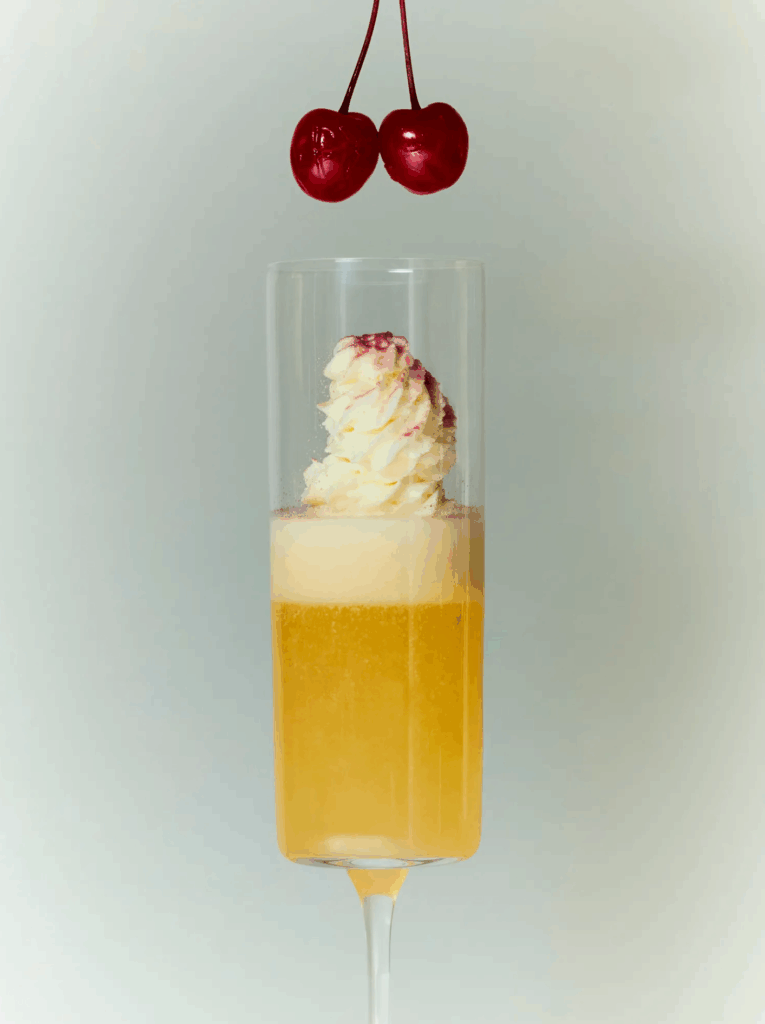
This resurgence of jelly culture isn’t happening in a vacuum. On Instagram, quivering creations have become a full-fledged aesthetic – a counterpart to the squishy sofas and bubble furniture that boomed during lockdown. Food-fashion hybrids are thriving, too: jelly sandals crowned the shoes of the summer, The Row making them chic, while designers like Rachel Antonoff embrace jelly motifs in prints. “It’s food without being literal,” says Sarah Isenberg, an art historian at MoMA PS. “It’s playful, subversive – you wear what you eat.”
Historically, jelly has swung between extremes: medieval symbol of wealth, mid-century housewife’s trick, the kitschy aspics of the ’70s. Today, it’s being reclaimed as both art and nourishment, blurring boundaries between the innocent and the sensual. “A jelly can be childlike, but also erotic,” says Khuyen Do, creative consultant and founder of The Cakewalk. “That duality is exactly why it works in fashion, food, and marketing.”
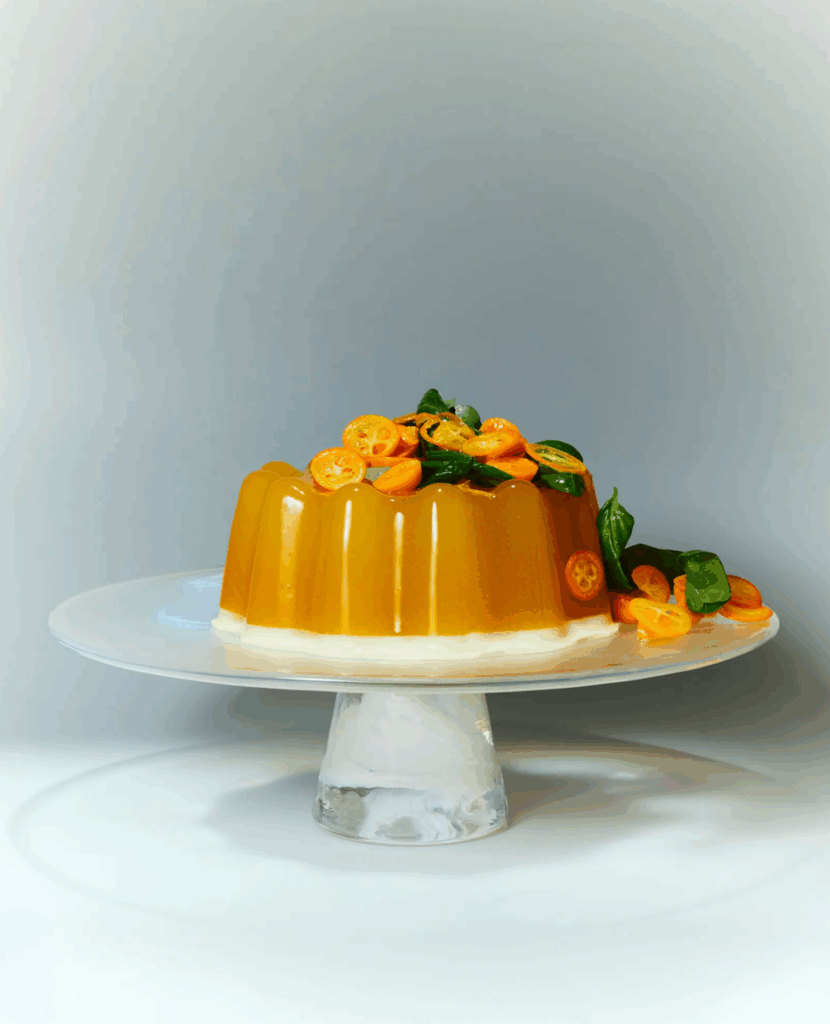
Messinger is leaning into that energy. At New York Fashion Week, she’s staging a jelly installation rumored to involve a horse mould. Her hope? That others discover the same liberation she’s found. “The more I make jelly, the more I learn to generate my own joy,” she says. “It’s about tapping into that raw inner child. And it’s powerful.”
